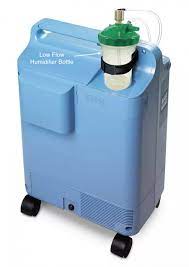A common understanding among people is that a humidifier is employed to introduce moisture into the air. However, there is curiosity about whether a humidifier serves other purposes, for instance, if it can increase oxygen levels in a house.
Using a humidifier does not raise the oxygen level in a room, and in fact, it may slightly reduce it. However, a humidifier can help improve the air quality in your home indirectly when it works with other objects together.
Although this statement may appear to contradict itself, it is indeed accurate. In this post, I will elaborate on how this occurs and also address some related queries.
How Do Humidifiers Affect Oxygen Levels in a House?
Have you ever experienced difficulty breathing upon entering an indoor tropical botanical garden due to the high humidity levels? The elevated moisture content in the air can cause discomfort. To be precise, when the humidity level is high, the proportion of oxygen in the air decreases, even if the overall amount of oxygen remains unchanged. This occurs because the additional moisture droplets reduce the partial pressure of oxygen, leading to shortness of breath or breathing difficulties.
To put it differently, our lungs have to work harder to search for oxygen in the presence of water vapor in the air. Therefore, it is advisable to stay in a cooler environment rather than a warmer one to feel more comfortable.

Do Humidifiers Add Oxygen to the Air?
To address this query, it is necessary to understand the functioning of a humidifier. Although there are several types of humidifiers, they all serve the purpose of introducing moisture into the air.
Certain models employ a fan or heating element to vaporize water, while others transform water into tiny droplets and disperse it into the air as mist.
However, it is important to note that the humidification process does not generate any oxygen. The humidifier functions by infusing water molecules into the air. Therefore, a humidifier cannot increase the amount of oxygen in the air.
What About Oxygen Humidifiers?
A medical device known as an oxygen humidifier is familiar to many individuals. Unlike a standard humidifier, it is utilized in hospitals as a piece of medical equipment. Despite its name, it does not generate oxygen.
Instead, it is regarded as an accessory to an oxygen cylinder. The oxygen humidifier filters and moistens the air from the oxygen cylinder, providing patients with a comfortable experience during oxygen therapy or other medical treatments. Only sterile water is used in the process.
The usage of an oxygen humidifier should be in accordance with the instructions provided by healthcare professionals. Overuse of the device may result in harmful effects.

Humidifiers With Oxygen Concentrators
Certain individuals prefer to undertake oxygen therapy at home using a portable oxygen concentrator. To prevent dryness in the nasal, throat, and mouth, healthcare professionals often recommend the addition of a humidifier since the high oxygen flow rate above 5 litres per minute can cause such discomfort.
Although not essential when using an oxygen concentrator, a humidifier can alleviate these symptoms and enhance the overall experience. Therefore, it is advisable to prepare a humidifier when using the device for an extended period.
A Few Tips to Increase Oxygen Levels in Your House
- Enhance indoor air quality by placing indoor plants as they are natural air purifiers and produce oxygen through photosynthesis.
- To promote fresh air circulation, open windows and doors in your house regularly.
- Use an air purifier to eliminate pollutants and contaminants from the air, which can enhance clean air circulation in your living environment.
- Proper ventilation is important to remove stale air and encourage the circulation of fresh air in your house.
- Keep your indoor air clean by regularly dusting, vacuuming, and cleaning your home, which can help eliminate allergens and pollutants.
- Minimize the presence of indoor pollutants such as smoking, chemical sprays, and non-natural cleaning products to foster a healthier living environment.
